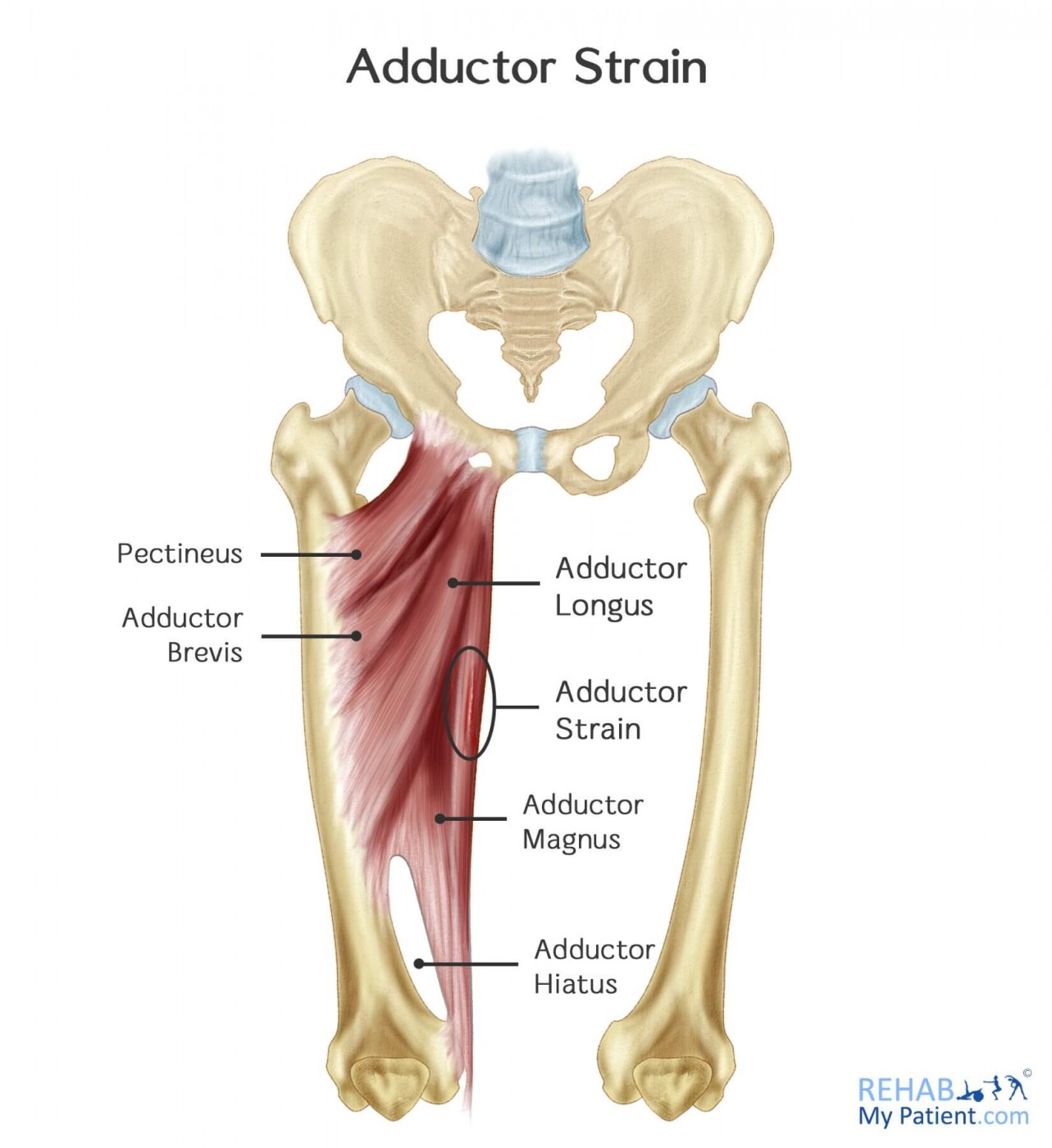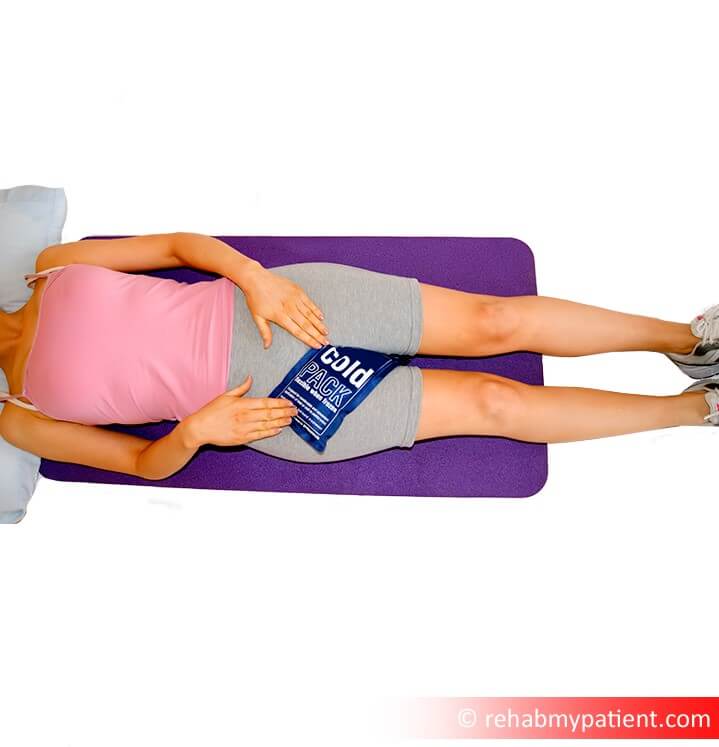
The adductor muscles are a group of three thin muscles that run along the inside of the thigh. They are known as adductor magnus, adductor minimus and adductor brevis. These muscles are skeletal muscles, and they function to pull your leg inwards. This type of movement is often seen in horse riders, and kicking a ball to the side. They also help to balance your body on uneven surfaces, and can stabilise your trunk when moving laterally.
An adductor strain is most commonly known as a ‘groin strain’. It is a common injury that involves tearing in the adductor muscle(s) found on the inside of the thigh.
Adductor strains occur more often in individuals who participate in competitive sports such as football, baseball, karate, tennis and running (typically sprinting).
An adductor strain is the result of a sudden contraction of the adductor muscles when it is in the elongated/stretched position. If the force going through the muscle is too large, a tear can occur to the muscle fibres, resulting in the muscle strain.
Signs & Symptoms
- Sudden sharp pain on the upper inside of your leg, or groin area.
- Groin discomfort described as ‘pulling’ sensation.
- Tender to touch in your groin.
- Walking may be affected (depends on the severity of strain).
- Pain on running.
- Swelling/bruising (occasional).
- Weakness in your leg.
How to Manage the Adductor Pain:
- Apply RICE (rest, ice, compression, elevation), which will relieve pain and reduce swelling. Place the ice bag (wrapped in a towel) over your groin area, or where the maximal pain is located.
- Stop all exercise and seek the advice of your trainer or therapist.
- In rare circumstances, you may require crutches to assist your walking.
- Manual therapy such as soft tissue massage, ultrasound or taping techniques can be useful to speed up healing and reduce pain.
- Physiotherapy at a later stage is of crucial importance, especially for professional athletes, as rehabilitation exercises will help you achieve full strength to your adductor muscles.
Recovery time varies significantly on the position of the tear, and the severity of the tear. Manual treatment can improve recovery, as will a home exercise program. If the tear is high on the adductor tendon, recovery can be significantly slower and take approximately 12-16 weeks. A tear to the mid-belly of the muscle will typically take between 4 and 12 weeks to heal depending on the severity of the tear.
Sign Up
Sign up for your free trial now!
Get started with Rehab My Patient today and revolutionize your exercise prescription process for effective rehabilitation.
Start Your 14-Day Free Trial
